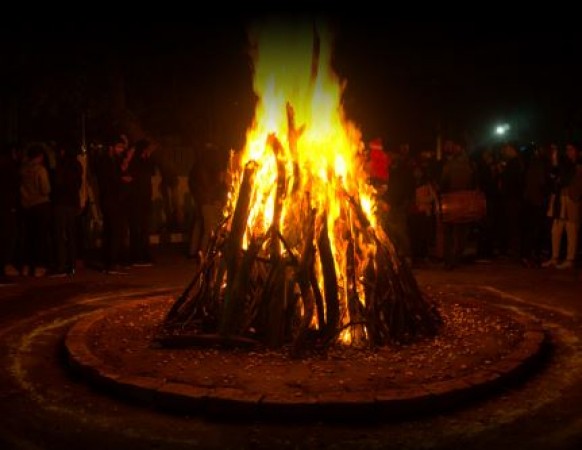
Lohri, celebrated on January 14th each year, marks the beginning of the festive season in India. Rooted in agrarian traditions, this festival is particularly cherished in the states of Punjab, Haryana, and Himachal Pradesh. Over time, Lohri has expanded its reach and found resonance in various parts of the country. In this detailed exploration, we will delve into the multifaceted aspects of Lohri, understanding its religious connotations, cultural significance, and the unique traditions associated with it.
Devotion to Agni (Fire)
At the heart of Lohri celebrations is the deep-rooted connection to Agni, the god of fire. This ritualistic devotion to fire symbolizes the reverence for Lord Surya (the Sun God) and the vital role of Agni in agricultural prosperity. During Lohri, people gather around bonfires, offering prayers and throwing items like sesame seeds, jaggery, and peanuts into the fire. This act is believed to invoke blessings and ensure a bountiful harvest for the coming year. The flames of the bonfire, reaching towards the sky, are a visual representation of the gratitude and hope of the community for a prosperous future.
Celebrating New Brides
In the vibrant tapestry of Lohri celebrations, the welcoming of new brides holds a special place. Homes where a new bride has recently entered are filled with heightened enthusiasm during Lohri. The festival becomes an occasion to bless and celebrate the new addition to the family. Traditional dances such as Gidda and Bhangra are performed with vigor, creating an atmosphere of joy and camaraderie. Lohri, therefore, serves as a cultural bridge that brings families and communities together to rejoice in the happiness of new unions.
Crop Connection
Lohri is intrinsically linked to the agricultural cycle, emphasizing the importance of the harvest. Before the festival, the Rabi crops, including sugarcane and mustard, are harvested. This agricultural connection is crucial, as Lohri serves as a prelude to the celebration of Baisakhi, another festival deeply entrenched in agrarian traditions. The festival acts as a symbolic marker, signifying the culmination of the harvest season and the beginning of a new agricultural cycle. The granaries storing the harvested crops become a focal point, representing abundance and prosperity.
Dulla Bhatti Legends
The folklore of Dulla Bhatti adds a captivating layer to Lohri celebrations. Dulla Bhatti, a legendary figure from Punjab, is associated with acts of bravery and chivalry. The most popular tale recounts his heroic efforts to rescue two girls, Sundri and Mundri, from the clutches of an unjust king. Dulla Bhatti ensured their safe escape and arranged suitable marriages for them. During Lohri, people sing songs and recite tales of Dulla Bhatti, keeping the folklore alive. This cultural aspect not only adds depth to the festival but also reinforces the values of justice, heroism, and the triumph of good over evil.
In conclusion, Lohri is a festival that encapsulates the rich tapestry of Indian culture, intertwining religious, cultural, and agricultural elements. The devotion to Agni, celebration of new brides, agricultural symbolism, and the legends of Dulla Bhatti collectively contribute to the vibrant and diverse celebrations of Lohri. This festival serves as a reminder of the interconnectedness of communities, the cyclical nature of life, and the importance of gratitude for the bounties of the earth. As families and communities come together around bonfires, Lohri becomes a time for reflection, celebration, and the reaffirmation of cultural bonds.
Symbolic Bharat Bandh Called on Dec 30 for Recognition of Sarna Religion
Shashi Tharoor Criticizes BJP Over Ayodhya Event Exclusion, Said These....